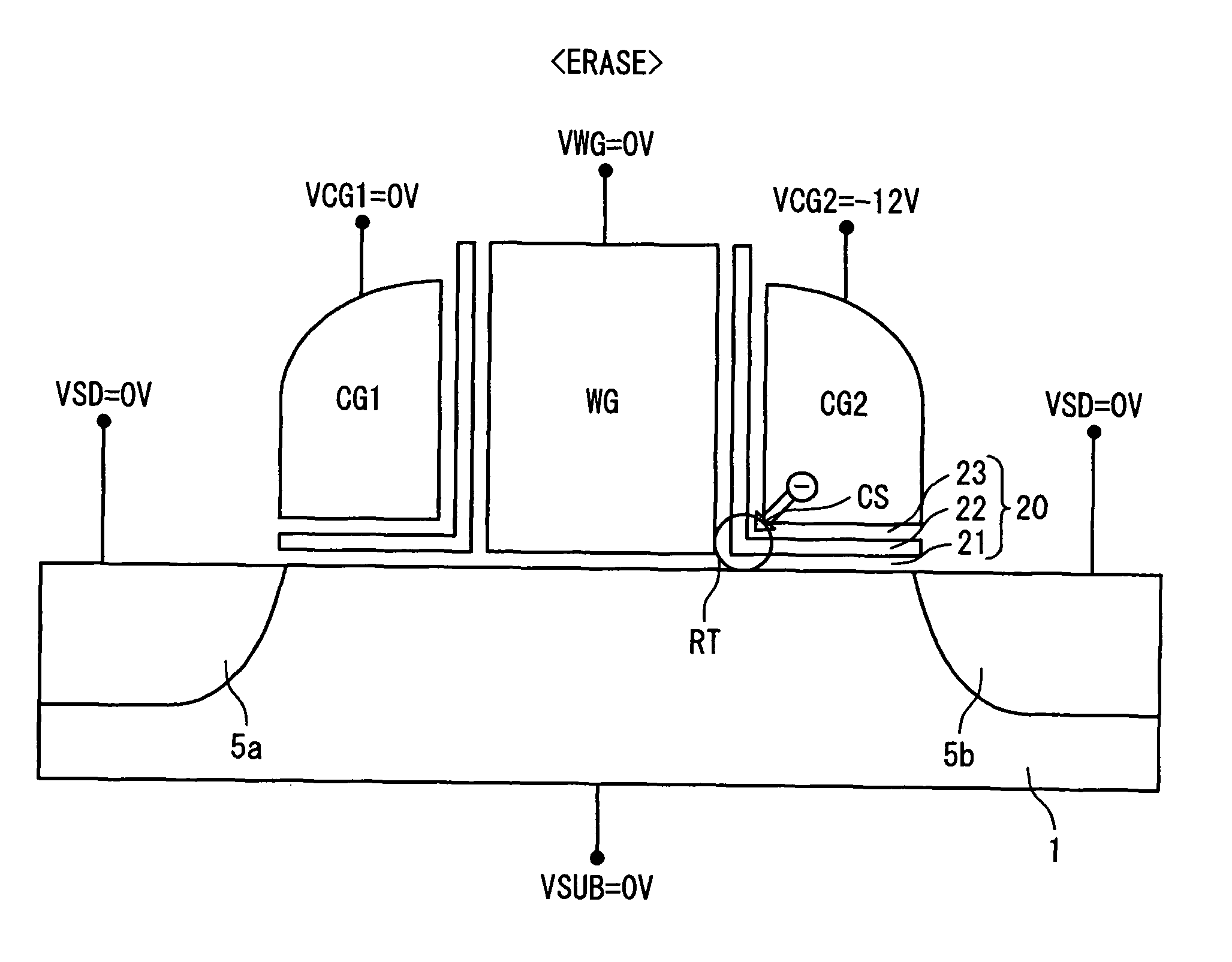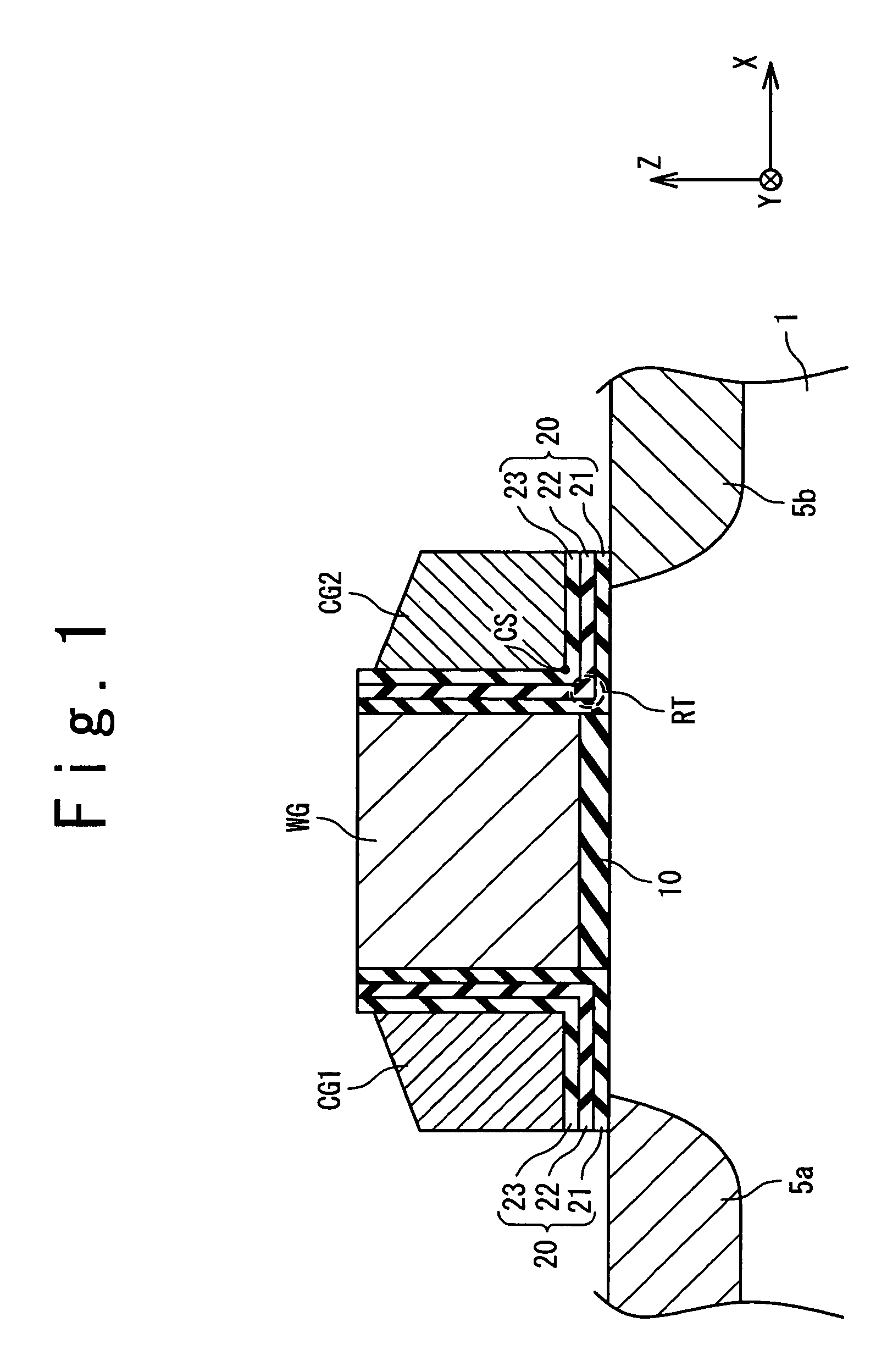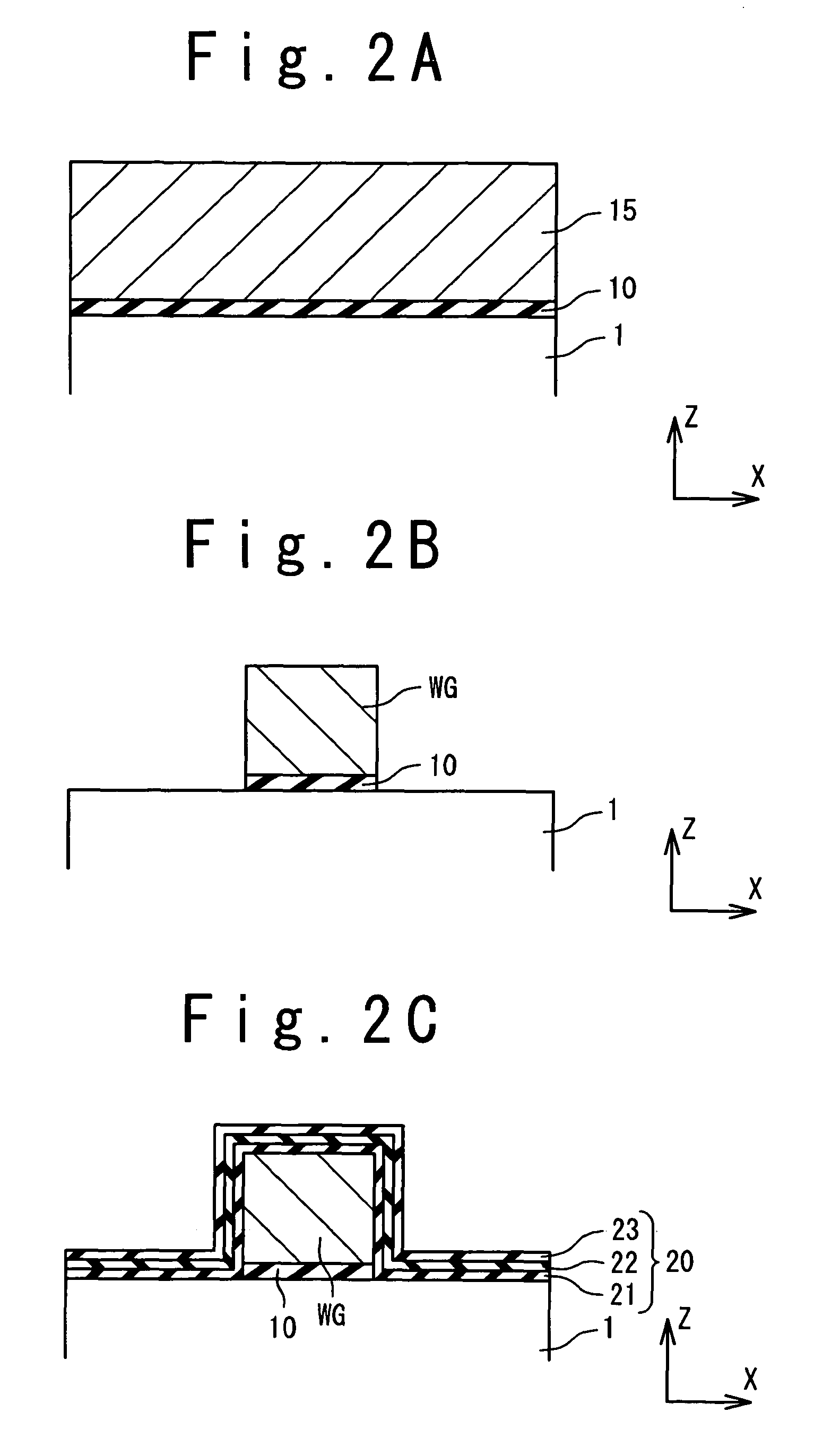Nonvolatile semiconductor memory and data programming/erasing method
a nonvolatile semiconductor and data programming technology, applied in semiconductor devices, digital storage, instruments, etc., can solve the problems of increasing current consumption and increasing element size, and achieve the effect of reducing element size, improving electron injection efficiency, and reducing applied voltag
- Summary
- Abstract
- Description
- Claims
- Application Information
AI Technical Summary
Benefits of technology
Problems solved by technology
Method used
Image
Examples
first embodiment
1. First Embodiment
[0058]1-1. Cell Structure
[0059]FIG. 1 is a cross-sectional view showing a structure of a nonvolatile semiconductor memory according to a first embodiment. In particular, FIG. 1 shows a cross-sectional structure of a memory cell transistor. The memory cell transistor according to the present embodiment will be described below with reference to FIG. 1.
[0060]Diffusion regions 5a and 5b which serve as source / drain are formed in a semiconductor substrate 1. For example, the semiconductor substrate 1 is a P-type silicon substrate (P-type well) and the diffusion regions 5a and 5b are N-type diffusion regions. A semiconductor region between the diffusion regions 5a and 5b is a channel region and the channel direction is the X-direction. A plurality of gate electrodes (WG, CG1, CG2) are provided over the channel region. The gate electrodes (WG, CG1, CG2) extend in the Y-direction perpendicular to the X-direction.
[0061]More specifically, the plurality of gate electrodes are...
second embodiment
2. Second Embodiment
[0128]FIG. 15 is a cross-sectional view showing a structure of a nonvolatile semiconductor memory according to a second embodiment. An overlapping description with the first embodiment will be omitted as appropriate.
[0129]In the second embodiment, the side surfaces of the word gate WG and the control gate CG are formed in a tapered shape. More specifically, an angle θ of the edge section CS of the control gate CG can be defined in the YZ-plane, as shown in FIG. 15. The angle θ can also be defined as an angle between a bottom surface of the control gate CG and a side surface of the control gate CG facing the word gate WG. The angle θ has been about 90 degrees in the first embodiment. In the second embodiment, the angle θ is less than 90 degrees. As the angle θ becomes smaller, the electric field becomes more and more convergent to the edge section CS, namely, the electric field concentration is further intensified. From a viewpoint of the electric field concentrat...
third embodiment
3. Third Embodiment
[0133]FIG. 17 is a cross-sectional view showing a structure of a nonvolatile semiconductor memory according to a third embodiment. An overlapping description with the first embodiment will be omitted as appropriate.
[0134]In the third embodiment, a step is formed on the surface of the semiconductor substrate 1. In other words, the surface of the semiconductor substrate 1 has an upper stage SU and a lower stage SL which form the step. The word gate WG is formed on the upper stage SU through the first gate insulating film 10. On the other hand, the control gate CG is formed on the lower stage SL through the second gate insulating film 20. As a result, a channel length around the trap region RT trapping electrons increases by ΔL as compared with the first embodiment. Since the channel length around the trap region RT increases, an OFF current of the memory cell transistor is further reduced. That is, an effect that the OFF current is further reduced can be obtained in...
PUM
 Login to View More
Login to View More Abstract
Description
Claims
Application Information
 Login to View More
Login to View More - R&D
- Intellectual Property
- Life Sciences
- Materials
- Tech Scout
- Unparalleled Data Quality
- Higher Quality Content
- 60% Fewer Hallucinations
Browse by: Latest US Patents, China's latest patents, Technical Efficacy Thesaurus, Application Domain, Technology Topic, Popular Technical Reports.
© 2025 PatSnap. All rights reserved.Legal|Privacy policy|Modern Slavery Act Transparency Statement|Sitemap|About US| Contact US: help@patsnap.com



